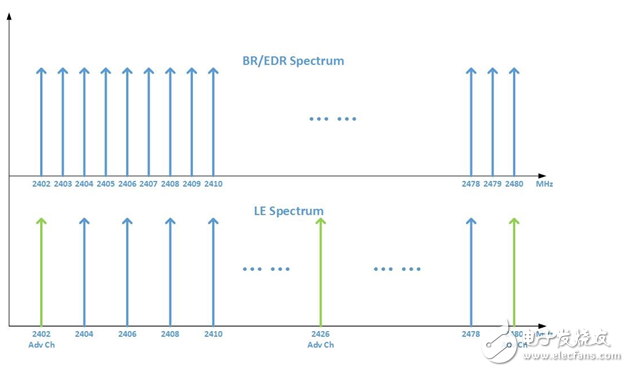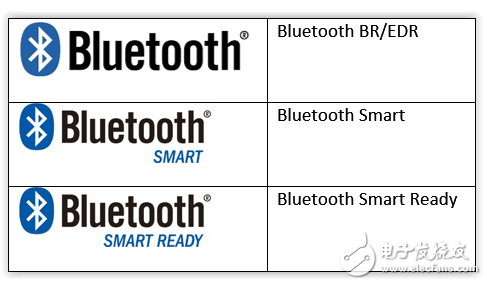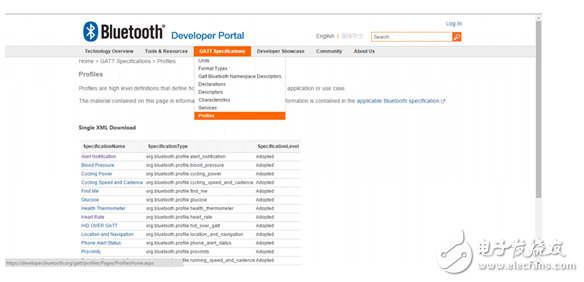Physical channel
All radio communications occur on pre-defined channels, and Bluetooth is no exception. However, the channel used by Bluetooth Smart is slightly different from Bluetooth BR/EDR, especially when Bluetooth Smart introduces a broadcast channel.
BR/EDR: 79 channels, channel index 0 to 78, coverage range 2400 ~ 2483.5MHz
Bluetooth Smart: 40 channels with channel index 0 to 39 and coverage ranging from 2400 to 2483.5 MHz, with channels 37, 38 and 39 being broadcast channels.

RF spectrum, Bluetooth BR/EDR vs. Bluetooth Smart
Brand (Brand)
There are three types of Bluetooth trademarks that can be used to distinguish the type of Bluetooth used in a product. Manufacturers use these trademarks on the product itself or on its packaging.

Maybe you are no stranger to BR/EDR and Bluetooth Smart, but you don't know about Bluetooth Smart Ready. Bluetooth Smart Ready devices can receive data from other Bluetooth devices, which can be converted into useful information by applications on Bluetooth Smart Ready devices, such as smartphones, PCs, tablets, etc., which are Bluetooth Smart Ready devices.
Power consumption (Power ConsumpTIon)
Low power consumption is one of the highlights of Bluetooth Smart. Bluetooth Smart devices can run for months or even years with a single button battery. The flexible configuration of Bluetooth Smart also allows applications to better manage the connecTIon interval to optimize receiver duty cycle. For Bluetooth BR/EDR, due to its higher data throughput, power consumption will increase accordingly. For more information on power consumption, please refer to section 4.5 of the second part of Volume 6 of the Bluetooth 4.2 Core Specification.
Topology
The BR/EDR supports a piconet topology (Piconet), which also supports distributed networks (Scatternet). In a distributed network, each piconet has one master device, and the slave devices can participate in different piconets based on time division multiplexing.
The Bluetooth Smart 4.1 version supports "dual mode", which allows the Bluetooth Smart device to play two roles simultaneously: the central device (Central) and the peripheral device (Peripheral). A device that supports a central role can initiate a connection to a peripheral device, while a device that supports a central role can also act as a peripheral device to connect with other central devices. It will also support BluetoothSmart Mesh in the future, and the Bluetooth Technology Alliance Smart Mesh Working Group is working hard to provide prototypes for testing. I believe many smart home or industrial automation applications will benefit from Bluetooth Smart Mesh technology.
Development
Bluetooth Smart development is very flexible, and developers can use the profiles used by the Bluetooth Technology Alliance to more flexibly customize applications. No matter what application scenarios developers want to create, flexible profile definitions can meet technical needs. In contrast, BR/EDR technology is relatively mature and its development is also module-level, so it is usually only necessary to integrate the modules into the product. For example, Bluetooth Smart should be selected when developing Beacon applications, because BR/EDR does not support Beacon applications.
Pairing
Pairing is mandatory for Bluetooth BR/EDR and optional for Bluetooth Smart. A simpler Bluetooth Smart app may not need to be paired.
Throughput (Throughput)
The throughput of Bluetooth Smart is approximately 1 Mbps (as specified in the specification), but it also depends on the application scenario. Bluetooth BR/EDR throughput is greater than 2Mbps, suitable for high quality audio bitstreams, or other higher bandwidth applications that need to stay connected.
4.x
It is often asked if a Bluetooth headset is compatible with Bluetooth 4.x. Does it mean that this headset is low-power? Can Bluetooth Smart be used for audio applications? Now Xiaobian will explain.
One of the Bluetooth 4.x core specifications is a low-power controller, and one volume is a Bluetooth BR/EDR controller. Normally, if the headset supports 4.x, it is compatible with the 4.x BR/EDR specification and is not compatible with low power specifications or Bluetooth Smart. You can confirm that it is a Bluetooth Smart product by identifying the Bluetooth Smart brand on the product packaging.
Profile
The Common Attribute Profile (GATT) can be called by the application or other configuration file to allow the client (client) to interact with the server (server). There are currently many configuration file definitions built using GATT.

GATT on the website. Statement: May change in 2016
The BR/EDR profiles include: Headset (HSP), Object Exchange (OBEX), Audio Transmission (A2DP), Video Transmission (VDP), and File Transfer (FTP). Look forward to more Bluetooth BR/EDR profiles being migrated to Bluetooth Smart in the future.
Internet Capability
The Bluetooth Technology Alliance offers three ways to access the Internet based on Bluetooth Smart technology: RESTFul API, HTTP Proxy Service (HPS) and Internet Protocol Support Profile (IPSP), all of which require a gateway. The device implements the connection. The gateway device can be any device that can access the Internet, such as a router, a set-top box, or even a smartphone that is idle at home. The networking capabilities of Bluetooth Smart make the Internet of Things more reliable and easier to implement. Recently, Google released the OnHub router, which can connect Bluetooth devices to the Internet. Finally, I hope this article will help developers understand the main differences between different Bluetooth technologies, and thus more appropriate to choose the right technology for the application.
Author: Bluetooth SIG Asia Pacific Technical Project Manager either Kay
About Bluetooth® wireless technology
Bluetooth wireless technology is a universal wireless standard that provides easy and secure connectivity to more and more devices and is one of the main technologies in the connected world. With a sustainable software platform and low power consumption, Bluetooth Smart technology creates new application opportunities for the mobile phone, consumer electronics, personal computer, automotive, healthcare and smart home industries. With annual shipments of up to 3 billion, Bluetooth devices are the wireless technology of choice for enterprise developers, product manufacturers and consumers worldwide. Supported by industry leaders, the Bluetooth Technology Alliance has authorized more than 27,500 member companies to collaborate, develop and mentor Bluetooth wireless technologies.
On April 8th, there was a wireless communication technology seminar to guide the development of the offline, so that the development of technical problems is worry-free ~!
Anti-Spy Hydrogel Screen Protector, Privacy Protection Film, Protection Film, Privacy Film, Privacy Screen Protective Film
Shenzhen Jianjiantong Technology Co., Ltd. , https://www.tpuprotector.com